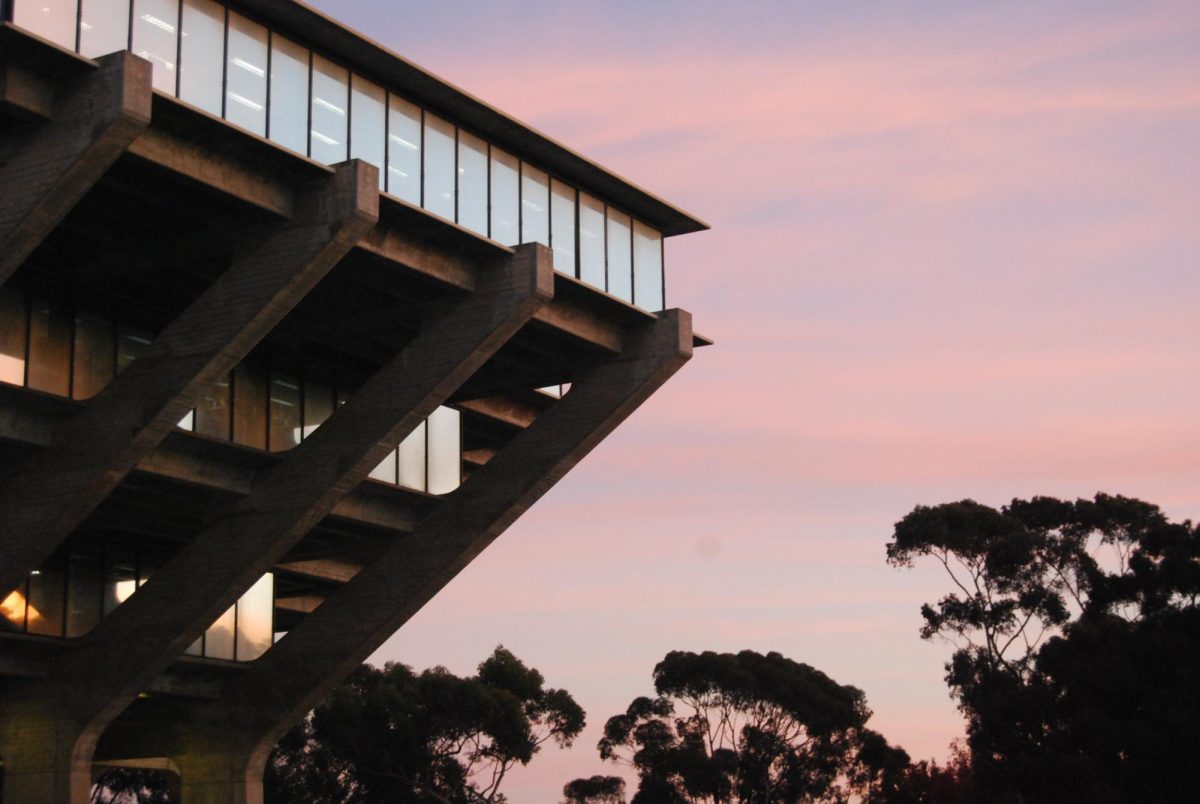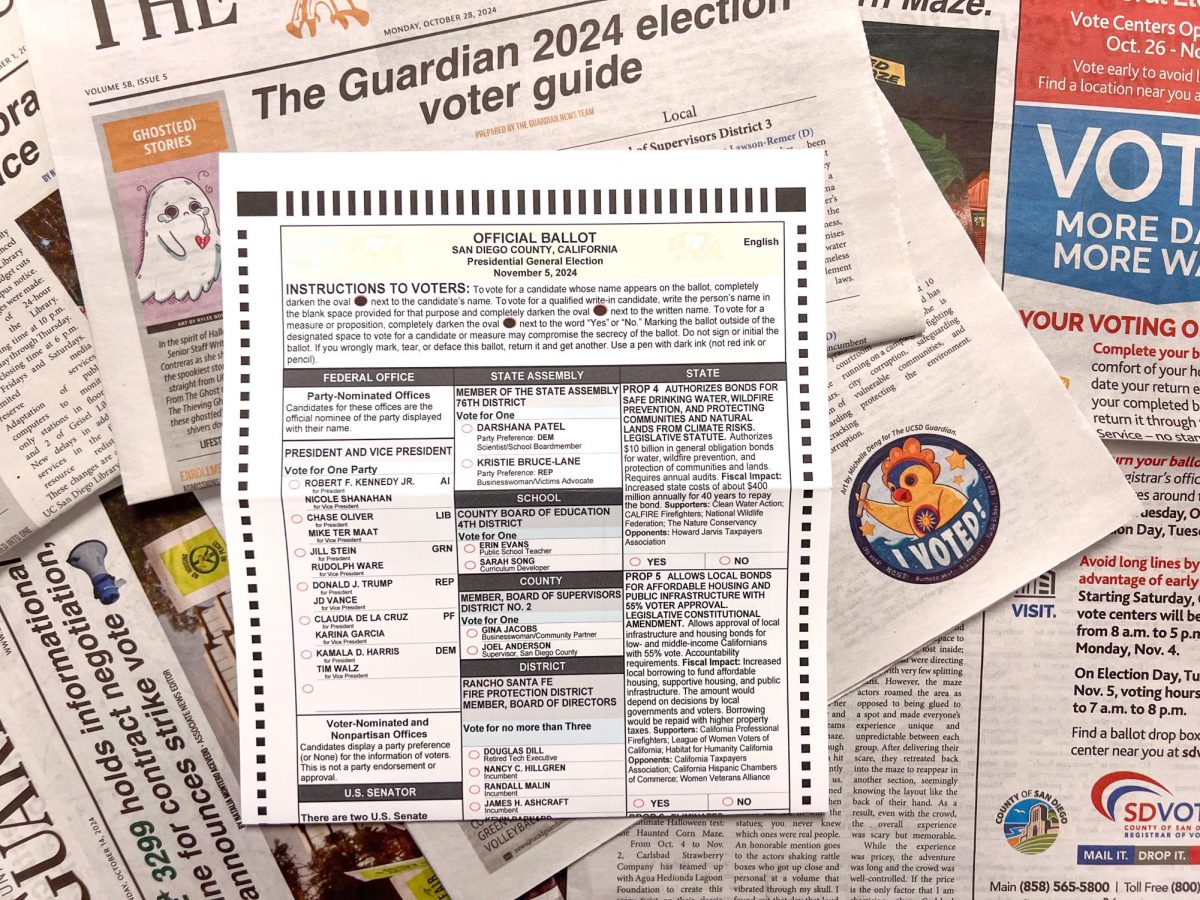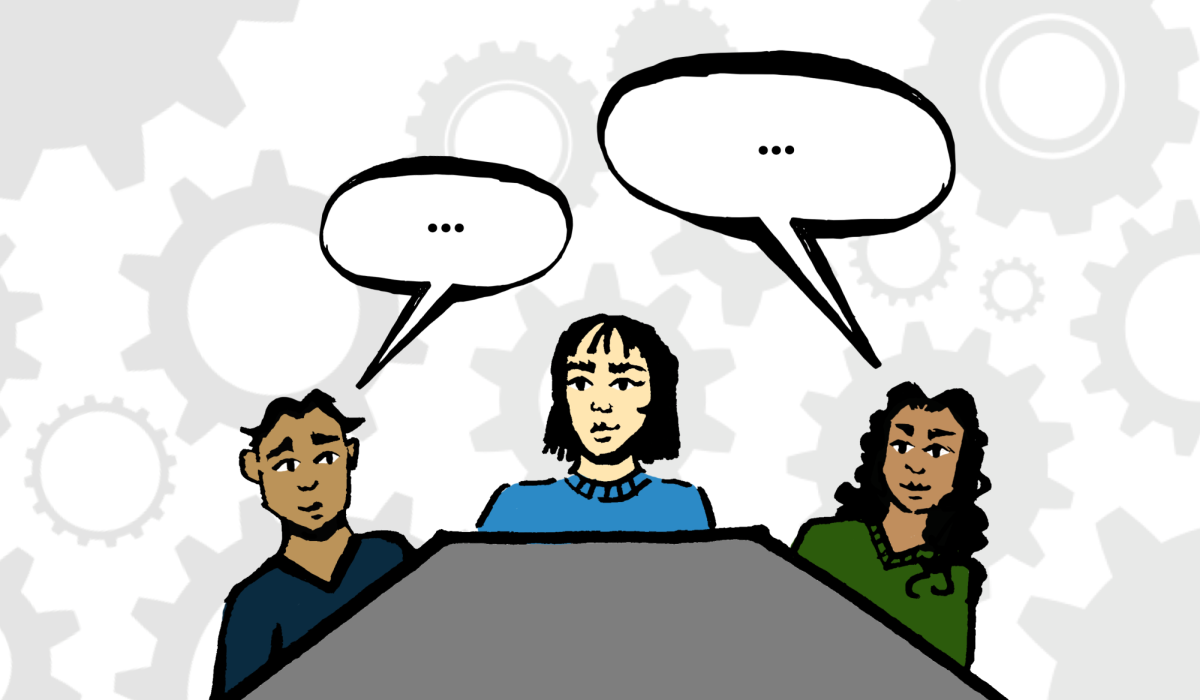A glimpse into the subculture of the role-playing game Dungeons & Dragons within the UC San Diego student body.
For a long time, as far as I was concerned, Dungeons & Dragons was that make-believe game the character Rowley Jefferson played in “Diary of a Wimpy Kid” that identified him as a social outcast. So when a couple of college friends asked me to join their D&D campaign in Fall Quarter 2017, I was a little surprised. It was my belief that D&D was an outdated, isolated game that was only played by die-hard fantasy enthusiasts. How wrong I was.
Over the course of the next two years, my group, known as a “party” in D&D, and I met about once a week. As we played, I not only became more entranced with the fantastical worlds and characters my party explored, but also grew increasingly aware of just how many UC San Diego students play D&D in their free time. It seemed that everyone I mentioned D&D to either was currently in a campaign, had been in a campaign, or was friends with someone who played. A whole campus subculture opened up to me, contradicting the “UC Socially Dead” label that suggests students don’t know how to properly socialize beyond school-related topics. Hearing about others’ D&D experiences as well as participating in my own campaigns have led me to wonder: What is so compelling about D&D for UCSD students? After further investigating student players’ experiences, it is clear that D&D not only offers a sense of community, but is also a welcome creative respite from the pressures of academic life.
D&D is a role-playing game, or RPG, typically set within a fantasy realm. It was created in 1974 by Gary Gygax and Dave Arneson, who were inspired by fantasy-based wargames they liked to play. Members of a campaign party create their own characters based on guidelines presented in the D&D Player’s Handbook, and then elaborate on those bases by creating backstories that will match with that campaign’s plotline and world. Some campaigns use physical statues on a tabletop grid to represent their characters, but it’s more common for players to fully role-play as their characters while playing. The players are guided by a Dungeon Master, or DM, who determines the course of the campaign’s narrative and the players’ battles and interactions with characters within the game’s world. According to the D&D official website, “the core of D&D is storytelling,” meaning that while the actual gameplay is guided by rules set forth in the handbook, each campaign’s world and story arch is a completely unique experience. What truly ensures this unpredictable, life-like element are the dice each player uses. Every major decision over the course of each session is determined via 6 dice, ranging from what is known as a d4, a four-sided die, to a d20, a twenty-sided die. Between these predominant elements of chance, open character development, and few restrictions on the type of world your DM builds, the creative opportunities for D&D campaigns are endless.
When D&D began to gain popularity in the ‘70s, many comments from non-players were speculative and negative. Some socially conservative and religious groups viewed the elements of magic and demons as potentially dangerous for young people, and due to the game’s imaginative nature, it was often labelled as a make-believe game for nerds. Yet, as information about the game spread and an increasing number of people started to play it, mentalities shifted to be more open-minded and focused on its positive elements of creativity and fun. Today, D&D remains a marker of nerd culture, but through its roles in the popular TV show “Stranger Things” as well as in multiple YouTube channels devoted to it, such as “Critical Role,” it is growing ever more popular. A prime example of this popularization is its growing prevalence as a UCSD subculture.

In a straw poll of 92 UCSD students who play D&D, 50 percent of them said that they didn’t start playing D&D until college. Campaign parties mostly range between four to five and six to seven players, and 32 percent of students met these fellow players through clubs. Fifty-five percent play once a week on average, and 38 percent use campus facilities to play. Eleanor Roosevelt College seems to have the most lively D&D student culture, although Roger Revelle College rests in a close second.
In addition to these smaller, individual campaigns across campus, there is a sizable D&D community online. The facebook page “UCSD RPG Club 2019-2020” currently has 799 members. According to Bonnie Chen, a UCSD graduate and former president of the RPG Club, the group’s purpose is to help put students interested in D&D and other RPG games in contact with each other. Posts within this group include DMs with campaign ideas searching for players, student players searching for campaigns with available positions, general information about the RPG Club, and other D&D-related topics such as artwork and local events.
The RPG Club also holds quarterly general body meetings where DMs are able to pitch their campaign ideas and gather players. Darkstar, a science fiction and gaming club located above Taco Villa in the Old Student Center, also helps students by maintaining a close relationship with the RPG club and allowing student campaigns to play in the library during its operating hours. However, a number of Darkstar librarians also participate in their own D&D campaigns, and will open the club’s fantasy library beyond the hours listed on the Facebook page so students can play for as long as they like. Between these campus-specific resources, all D&D handbooks and character sheet materials are available on the internet, and the existence of online platforms such as Roll20 that allow players to play with each other remotely, D&D campaigns are more accessible than many people realize.
Based on my interviews with current D&D players, the main reasons why D&D remains so popular among UCSD students is due to its inherently creative and social nature.
When playing in a D&D campaign session, players are no longer students with midterms and final projects to worry over — they are elves, bards, wizards, dwarves, dragon-borns, or paladins.
The very nature of D&D as a role-playing game means that players need to immerse themselves not only within the knowledge of their campaign’s world, but within the identity of their very characters. As such, a D&D session can be a restorative experience solely because it forces players to put aside their academic lives and channel their creative selves. This can be an especially fulfilling experience for students within Science, Technology, Engineering, and Mathematics majors, as it allows them to utilize creative skills but in a structured manner. Additionally, creating and playing as a D&D character is often a freeing experience, allowing individuals to branch out beyond their comfort zones within a safe, fictitious environment. And since it is impossible to play D&D without at least a DM and another player, sessions often become a pivotal element of players’ social lives. More often than not, spending hours on end with the same group of people while working together toward a common goal leads to strong bonds or even lifelong friendships developing between players.
“D&D is one of the best creative outlets I’ve found as I’ve gotten older because it’s not just writing a story or designing a character; it’s building a world and story with your friends that can span years and cover a multitude of different arcs,” ERC senior Wiley Bowen said. Bowen started playing D&D her first year at UCSD and acts as the DM for the campaign of which I’m currently a member. “It’s something that allows you to create while having a wonderful time with your friends, and that’s why I love it so much,” she said.
Graduate student Nevin Sarao first played D&D when he was in high school, but then began again only last year when several of his friends on campus expressed interest in beginning a campaign. “My favorite part about D&D is the ability to make dumb and silly decisions with your characters,” he said, before going on to recount a time when his character, a sorcerer, was able to freeze a river so that his party didn’t have to walk around it. Sarao is currently a student teacher at Olympian High School, but still plays with his UCSD undergraduate friends whenever their schedules allow. “I definitely see myself playing D&D for a long time,” he said. “It doesn’t take a lot to play. Just a few good friends and a little imagination.”
Beyond its role as a creative outlet, playing D&D also attracts students due to its ability to serve as a tool in honing their storytelling abilities. Many students within the UCSD literature department play D&D not only because they are enchanted by the concept of actively inhabiting a character within a fictitious realm, but so that they may in turn be able to apply the game’s skills to their own works.
Kimberly Pike, a senior majoring in biological anthropology and minoring in literature/writing, spoke with me about how she uses D&D to inspire and direct her writing. She was first introduced to D&D in 1989 while it was still an emerging trend, but was reintroduced about two years ago. Using the most recent D&D handbook, she updated her original character, Kassandra, a dwarf fighter, and created five more characters. This process helped her understand the importance of having a diverse group of characters who are able to work together within narratives as a strong team. She then began to write their fictional adventures, using D&D dice in order to dictate what direction the plot would take.
“I was writing a battle scene the first time I decided to use the dice to help sculpt my story,” Pike said. “I was struggling with how to make my battles more realistic … Then I realized that I already had the answer: my dice.” Over the course of writing that battle, Pike rolled a d20, the die predominantly used for D&D decision-making, in order to determine each of the scene’s events. Thrilled with the experience, she still uses D&D dice to direct her characters’ actions when faced with critical decisions. “It was one of my favorite battle scenes ever and something I never would have come up with without the die rolls,” she said.
There is a reason why people still play D&D. It provides the chance to escape from the cares of academic and personal responsibilities, spend quality time with friends, and hone creative skills often underutilized in daily life. It’s no wonder why UCSD students spend so much of their limited free time toward cultivating this subculture devoted to fun and imagination.
Image courtesy of Daisy Scott. Infographic courtesy of the Data Visualization team.








